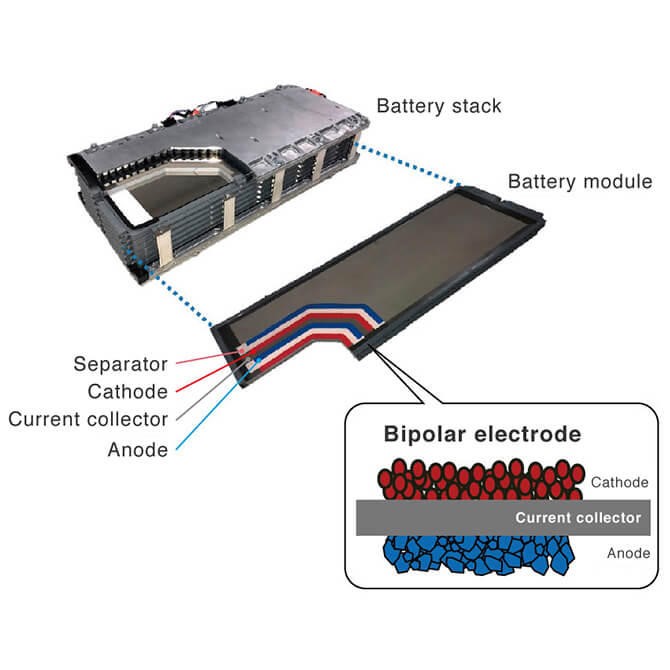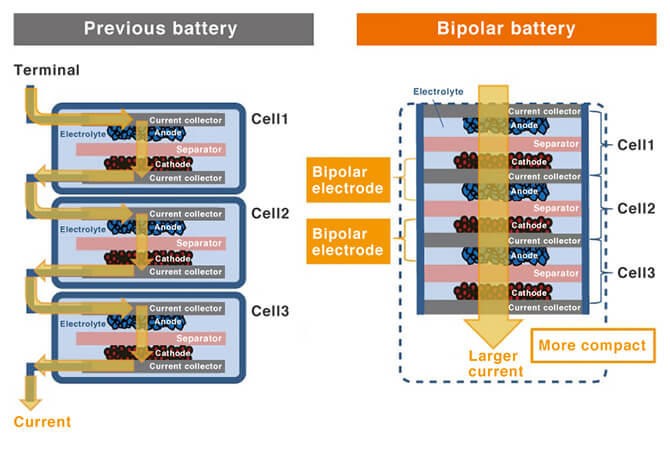Lesson 9 Eco-innovative technology in the automotive industry
Eco-innovative technology in the automotive industry
Environmental technologies refer to process technologies (including energy conversion technologies) and measurement technologies used for environmental purposes (to measure pollution or to identify toxics). Examples:
- Pollution control technologies
- Cleaning technologies that treat pollution released into the environment
- Cleaner process technologies: new manufacturing processes that are less polluting and/or more resource efficient
- Waste management equipment
- Environmental monitoring and instrumentation
- Green energy technologies
- Noise and vibration control
The automotive industry has developed a variety of green technologies to ensure sustainability and to lower the negative effects of the industry on the earth [[i]]. Going green in any industry is incredibly important for the future of the environment. The automotive industry might be most important because of just how much of effect cars and vehicles have on the environment. Historically, the earth has been damaged by the production of cars and by the vehicles themselves.
Innovative bipolar nickel-hydrogen batteries for hybrid vehicles
Innovative green technology is associated with Tesla first, which is the accelerating transition to sustainable energy. After launching the first electric car, Roadster, in 2008, Tesla officially presented its cutting-edge battery technology and electric powertrain. Toyota Industries establishes on-board battery production line at its new Ishihama Plant, increasing production of bipolar nickel-hydrogen batteries for hybrid vehicles [[ii]] Toyota Industries Corporation has established its new Ishihama Plant. The plant will start production of bipolar nickel-hydrogen batteries for hybrid vehicles in October 2022.
The new plant is expected to operate at a production capacity of 20,000 units per month, and, together with the Kyowa Plant (Obu-shi, Aichi) that started battery production in May 2021, this will boost total capacity to 40,000 units per month.
Toyota Industries developed its bipolar nickel-hydrogen battery jointly with Toyota Motor Corporation, and was used first in the world as the electric drive battery for electrified vehicles in the Toyota Aqua, launched in July 2021. In this innovative battery, a cathode is applied to one side of a metal component called a current collector and an anode to the other. Several of these structures, which are known as “bipolar electrodes,” are stacked together to form a battery.
By having cathode and anode together in the current collector, batteries can be made smaller as they require fewer parts. In addition, the wider electrical path and simple structure reduce resistance within the battery, allowing large currents to flow quickly. This means that they can produce higher outputs compared to conventional nickel-metal hydride batteries.

10‑1. Figure_ The bipolar nickel-hydrogen battery
[https://www.toyota-industries.com/news/2022/08/30/005417/]
In bipolar nickel-hydrogen batteries, a cathode is applied to one side of a metal component called a current collector and an anode to the other; several of these structures, which are known as “bipolar electrodes,” are stacked together to form a battery. The Aqua is the world’s first vehicle to use a bipolar nickel-hydrogen battery as an electric drive battery.

10‑2. Figure_ Bipolar nickel-hydrogen battery
[https://www.toyota-industries.com/products/automobile/battery/]
Compactness and Higher Output: As the term “bipolar” indicates, the current collector can be shared by a cathode and an anode.
This technique reduces the number of parts and thus enables the battery to be made more compact. It is also possible to stack a larger number of cells. In addition, since bipolar batteries have a wider electrical path and a simpler construction, there is lower resistance within the battery itself. This enables the flow of larger currents, achieving approximately twice the output of the conventional nickel-hydrogen battery equipped in the previous-generation Aqua.
The bipolar nickel-hydrogen battery, which achieves both superior driving performance and environmental performance, is scheduled to be used in the Lexus RX unveiled in June 2022 and the Toyota Crown unveiled in July. The Ishihama and Kyowa plants are prepared to handle future increases in demand. To contribute to the expansion and spread of electrified vehicles and work toward carbon neutrality, Toyota Industries is both working on stable supply as well as to enhance its lineup of batteries so that they can be used in a range of electrified vehicles.
Pioneering Use of Biosysthetic Rubber in Engine and Drive System Hoses
Toyota became the world’s first automaker to use biohydrin rubber, jointly developed with Zeon Corporation and Sumitomo Riko Co., Ltd., in vacuum sensing hoses (engine and drive system hoses). Biohydrin rubber is manufactured using plant-derived bio-materials instead of epichlorohydrin, a commonly-used epoxy compound.
The first vehicles to use the new vacuum sensing hoses was produced in May 2016, with usage expected to be rolled out to all models manufactured in Japan by the end of the year. Toyota plans to expand the use of biohydrin to other high performance rubber components, such as brake hoses and fuel line hoses.
Since plants absorb CO₂ from the atmosphere during their lifespan, such bio-materials achieve an estimated 20 percent reduction in material lifecycle carbon emissions compared to conventional petroleum-based hydrin rubber.
As biodiesel fuel is produced by chemical processing on oil palm, the raw material of palm oil, bio glycerin is generated as a by-product.
The bio glycerin can be used to manufacture bio epichlorohydrin. (Roundtable on Sustainable Biomaterials certification as a plant-derived raw material has been confirmed.)

10‑4. Figure_ Toyota became the world’s first automaker to use biohydrin rubber
[https://global.toyota/pages/global_toyota/sustainability/report/kururisa_en.pdf]
High-speed EV motor features improved power density
The Magnetically driven motor was developed by the University of New South Wales (UNSW Sydney) and significantly reduces the use of rare-earth materials such as neodymium. The high-speed device has the potential to increase the range of electric vehicles.
The new motor designed and built by the team at UNSW is an improvement on existing IPMSMs (Interior Permanent Magnet Synchronous Machine Motor), which are predominantly used in traction drive of electric vehicles.
The design of the prototype interior permanent magnet synchronous motor (IPMSM), inspired by the shape of the longest railroad bridge in South Korea, has achieved speeds of 100,000 revolutions per minute. The maximum power and speed achieved by the motor have exceeded the existing high-speed record of laminated IPMSMs, making it the world’s fastest IPMSM ever built with commercialized lamination materials.
The motor is able to produce a high power density, which is beneficial for EVs in reducing overall weight and increasing range for any given charge.
An IPMSM has magnets embedded within its rotors to create strong torque for an extended speed range. However, existing designs suffer from low mechanical strength due to thin iron bridges in their rotors, which limits their maximum speed.
The UNSW device features a new rotor topology that significantly improves robustness, while also reducing the amount of rare-earth materials per unit of power production. It is based on the engineering properties of the Gyopo rail bridge, a double-tied arch structure, as well as a compound-curve-based mechanical stress distribution technique.
This research project tried to achieve the absolute maximum speed, with a peak power density that is around 7 kilowatts per kilogram, For an EV motor, it would actually reduce the speed somewhat, but that also increases its power.
The project can scale and optimize to provide power and speed in a given range, for example, a 200-kilowatt motor with a maximum speed of around 18,000 rpm [would] perfectly suit EV applications.
The new motor also offers a significant cost advantage over existing technology and uses less rare-earth materials. Most high-speed motors use a sleeve to strengthen the rotors and that sleeve is usually made of high-cost material, such as titanium or carbon fiber.
The sleeve itself is very expensive and also needs to be precisely fitted. That increases the manufacturing cost of the motor.
Rotors have very good mechanical robustness, so that sleeve is don’t need, which reduces the manufacturing cost. It only use around 30 percent of rare earth materials, which includes a big reduction in the material cost, thus making our high-performance motors more environmentally friendly and affordable.
This high-speed magnetically driven motor significantly reduces the use of rare-earth materials such as neodymium. [University of New South Wales].
[i] Innovative green technology in the automotive industry Ultimate Guide (ourgoodbrands.com)
[ii] Toyota Industries establishes on-board battery production line at its new Ishihama Plant, increasing production of bipolar nickel-hydrogen batteries for hybrid vehicles | Toyota Industries Corporation (https://www.toyota-industries.com/products/automobile/battery/)